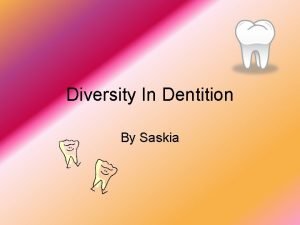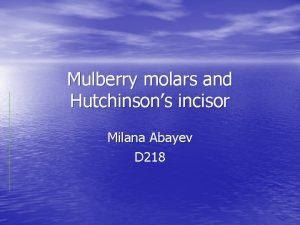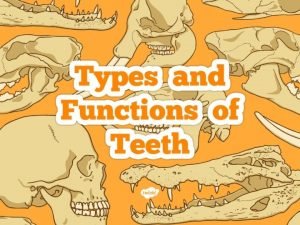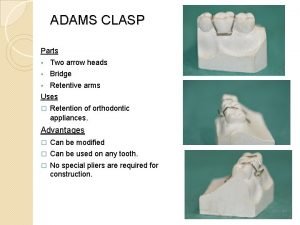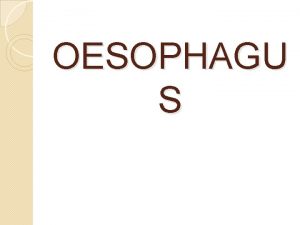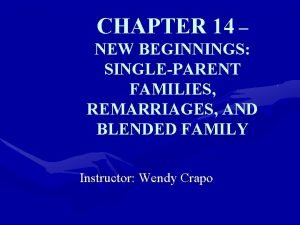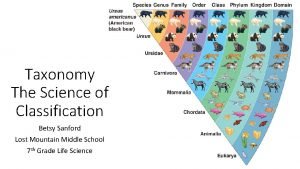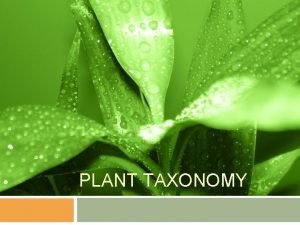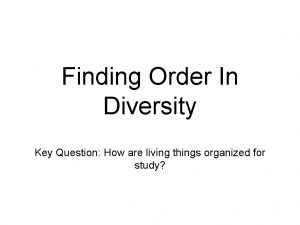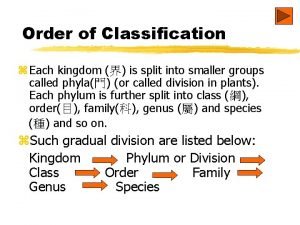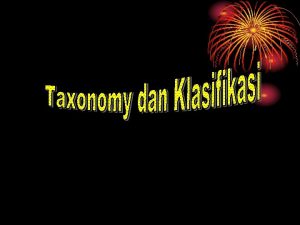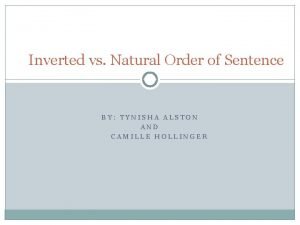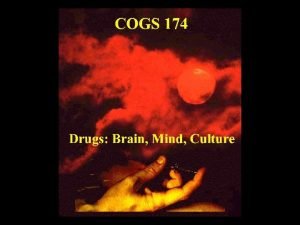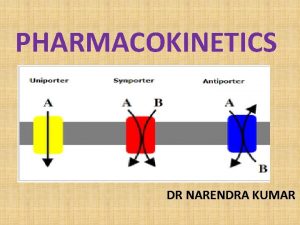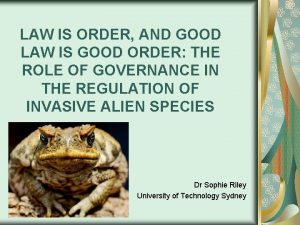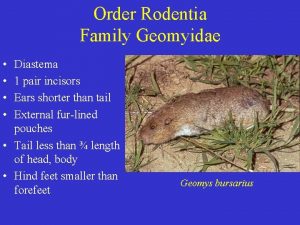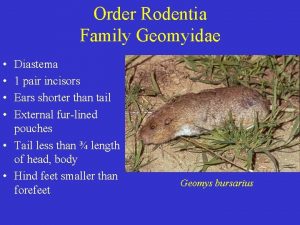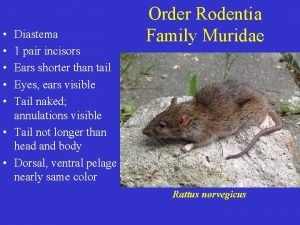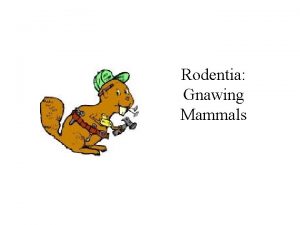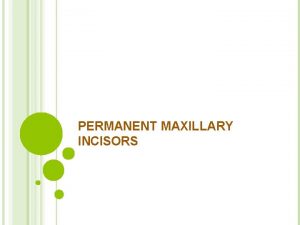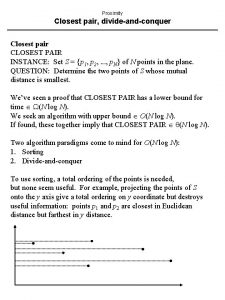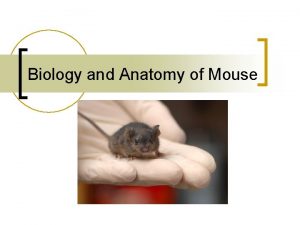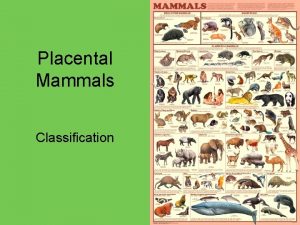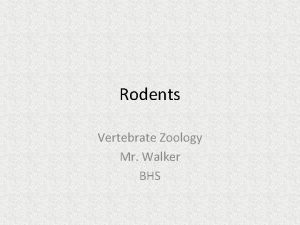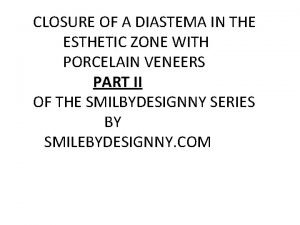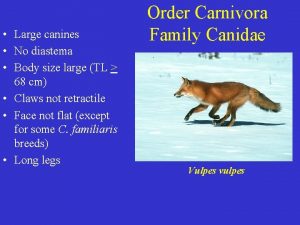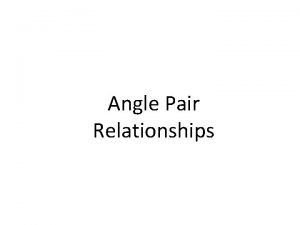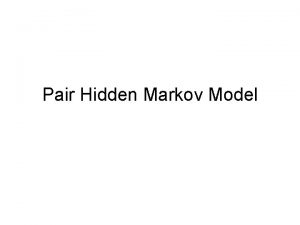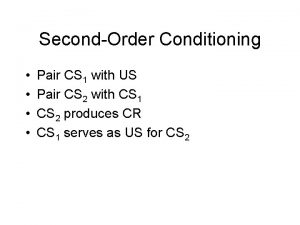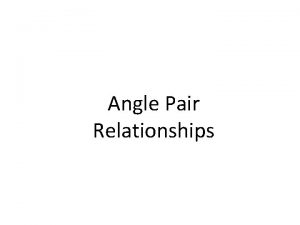Order Rodentia Family Cricetidae Diastema 1 pair incisors






























- Slides: 30

• • • Order Rodentia Family Cricetidae Diastema 1 pair incisors Ears shorter than tail Eyes, ears visible Tail with fur, or laterally flattened; not bushy • Tail shorter than head and body Peromyscus leucopus

Identification: Stocky body; thick tail with blunt tip; dorsum brownish; venter white; molars cuspidate Distribution: West, southeast Iowa Habitat: Prairies; burrow in grassy areas; need bare areas for dustbathing Onychomys leucogaster

Diet: Invertebrates, carrion, herbaceous vegetation, seeds Reproduction: Multiple litters of 1 -6 annually Conservation: Rare (formerly Endangered); possibly adapting to agriculture and increasing Onychomys leucogaster

Identification: Long bicolored tail; fur bristly, short; dorsum yellowbrown to gray; venter white; upper incisor face grooved Distribution: Statewide Habitat: Grassy habitats; spherical nest of grasses, fibers, down Reithrodontomys megalotis

Reithrodontomys megalotis Diet: Seeds, grains, herbaceous vegetation; some invertebrates Reproduction: Up to 14 litters of 1 -9 annually Conservation: Fairly common

Identification: Large eyes; fur not very bristly; incisors lack grooves; bicolored tail in winter; dorsum brown to gray; dorsum white (TL 160200) Distribution: Statewide Habitat: Tall weedy, brushy, wooded habitat Peromyscus leucopus

Peromyscus leucopus Diet: Nuts, seeds, berries, invertebrates Reproduction: Several litters of 1 -7 annually Conservation: Common Other: Carrier of Hantavirus Pulmonary Syndrome

Identification: Small eyes, ears; tail about same length as hind foot; face of upper incisors grooved; dorsum usually brownish; venter grayish brown Distribution: Formerly statewide; presently poorly known Habitat: Wet grassy areas Synaptomys cooperi

Synaptomys cooperi Diet: Leaves, grasses, twigs, roots, fungi, mosses, ferns Reproduction: Multiple litters of 2 -6 Conservation: Threatened; few recent records

Clethrionomys gapperi Identification: Small eyes, ears; dorsum with reddish stripe flanked by gray; venter grayish to white Distribution: Northern Iowa Habitat: Cold, moist forests and open wet areas; tunnel under logs

Clethrionomys gapperi Diet: Nuts, seeds, berries, herbaceous vegetation, some invertebrates Reproduction: Multiple litters of 2 -10 Conservation: Endangered; likely survives only in Pilot Knob State Park, Hancock County

Microtus pinetorum Identification: Small eyes and ears; tail longer than hind foot, and up to 29 mm; fur soft and velvety; dorsum reddish to reddish brown Distribution: Statewide Habitat: Old-growth forest

Microtus pinetorum Diet: Nuts, seeds, roots, grasses, bark Reproduction: Multiple litters of up to 3 young Conservation: Uncommon

Identification: Small eyes and ears; tail usually > 29 mm; fur long and coarse; dorsum brown to gray with salt-and-pepper appearance; venter usually yellowish; tail somewhat bicolored; molars with 5, 4, 4 islands of dentine Distribution: Statewide Habitat: Dry, grassy areas Microtus ochrogaster Molars

Microtus ochrogaster Diet: Green vegetation, roots, seeds, bark Reproduction: Multiple litters of 1 -7 Conservation: Generally common, uncommon in east Iowa; probably declining due to agriculture

Identification: Small eyes, ears; tail usually longer than 29 mm; fur soft; dorsum brown to gray with salt-and-pepper appearance; venter usually gray; 3 molars with 5, 5, 56 islands of dentine Microtus pennsylvanicus Distribution: Statewide Habitat: Moist grassy areas Molars

Microtus pennsylvanicus Diet: Green vegetation, seeds Reproduction: Multiple litters of 1 -11 Conservation: Very abundant; probably increasing; densities may reach 100 per acre

Order Rodentia Family Cricetidae Ondatra zibethicus picture by Mark F. Wallner

Ondatra zibethicus • 25 -36 cm long • Tail 20 -28 cm • Shoulder height 13 cm • 908 -1816 g Plump, rat shaped body Entire body covered with fur, feet and tail hairless Small ears and eyes hidden within fur Hind feet partially webbed Tail scaly, black and flattened vertically

Ondatra zibethicus • Skull contains 16 teeth • 4 large incisors (2 cm) • Used for cutting plant material Dental Formula 1 -1 -0 -03 -3

Ondatra zibethicus • North America 1. 8 mil years ago • One of most widely distributed • Require marshy area salt/freshwater • Water depth 1 -2 m • Cattails, pondweeds, and bulrushes • Food and nest material • In prime habitat, 25/ acre

Ondatra zibethicus • • • Crepuscular organism Feeds mainly on aquatic vegetation Build dens of cattails, reeds and mud Important waterfowl nesting habitat 1982 -83 about 7 million muskrats trapped Fur yielded a profit of 28 million dollars

Ondatra zibethicus references • Jones, J. Knoox, Jr. and Elmer C. Birney. 1988. Handbook of Mammals of the North-central states. University of Minnesota Press, Minneapolis. 346 pp. ISBN 0 -81661420 -2 • Kays, Roland Don E. Wilson. 2002. Mammals of North America. Princeton University Press, Princeton, New Jersey. 240 pp. ISBN 0 -691 -07012 -1 • Willner, G. R. , G. A. Feldhamer, E. E. Zucker, and J. A. Chapman. 1980. Ondatra zibethicus. Mamm. Species, 141: 1 -8

Peromyscus maniculatus bairdii Deer mouse Sara Eubanks A ECL 364

Peromyscus maniculatus bairdii: deer mouse Sara Eubanks • Identification: smallest Peromyscus in north central region, dorsum dark, grayish brown, ventral white, tail distinctly bicolored, dark on top and white on bottom tipped with a tuft of short, stiff hairs. (TL 125 -160, tail 42 -65, hind foot 15 -19, ear 13 -15, weight 12 -25 g) www. yahoo. com www. beartracker. com

Peromyscus maniculatus bairdii • Habitat: Open, except in woodlands and wet, swampy lowlands. Thrives in grassy areas, weedy fields, along overgrown fencerows and roadsides. • Diet: omnivorous; eat insects, invertebrates, and seeds; get most of water from dew and water in their food. www. nsrl. ttu. edu/tmot 1. peromani. htm

Peromyscus maniculatus bairdii • Distribution: statewide • Reproduction: several litters annually of 111 offspring, usually 4 -6. Nests are constructed below ground level in a burrow dug by occupant or abandoned by another small animal. Young are weaned at 3 weeks and can breed at 5 to 6 weeks old.

Peromyscus maniculatus bairdii • Conservation status: Abundant; densities can reach 11 mice per acre depending on habitat. http: //animaldiversity. ummz. umich. edu/ site/accounts/information/Peromyscus_ maniculatus. html.

Peromyscus maniculatus bairdii • Other: Host of a strain of hantavirus called Sin Nombre virus (also called Four Corners or Muerto Canyon virus). This causes fatal disease in humans termed pulmonary syndrome • Nocturnal • In winter, ten or more of mixed sexes huddle together in nests to conserve heat.

Peromyscus maniculatus bairdii • References • Bunker, A. 2001. "Peromyscus maniculatus" (On-line), Animal Diversity Web. Accessed September 26, 2004 at http: //animaldiversity. ummz. umich. edu/site/accounts/information/Pero myscus_maniculatus. html. • Kays, R. W. and D. E. Wilson. 2002. The Mammals of North America. Princeton University press, Princeton, New Jersey. • Jones, J. K. and E. C. Birney. 1988. Handbook of Mammals of the North-central States. University of Minnesota Press, Minneapolis. • http: //www. wildwnc. org/af/deermouse. html
 Herbivore dentition
Herbivore dentition Haplorhines
Haplorhines Hutchinson incisor
Hutchinson incisor Functions of the incisor teeth
Functions of the incisor teeth Labial bow wire gauge
Labial bow wire gauge 25 cm from incisors
25 cm from incisors G j mount classification
G j mount classification Central incisor mesial aspect
Central incisor mesial aspect Python unordered pair
Python unordered pair Dof of screw pair
Dof of screw pair Via optica
Via optica Conclusion on topic family
Conclusion on topic family Varies from family to family on the periodic table
Varies from family to family on the periodic table Binuclear family vs blended family
Binuclear family vs blended family Third order cybernetics
Third order cybernetics Genus order family
Genus order family Family order genus species
Family order genus species Phylum classification
Phylum classification Order plants
Order plants System of arranging and naming organisms
System of arranging and naming organisms Kingdom phylum class
Kingdom phylum class Biblical order of family
Biblical order of family Species genus family order
Species genus family order Dinoflagellates literally means _____.
Dinoflagellates literally means _____. Domain kingdom phylum class order family genus species
Domain kingdom phylum class order family genus species Natural order sentences examples
Natural order sentences examples First and second order change in education
First and second order change in education Personal selling techniques
Personal selling techniques Difference between 1st order and zero order kinetics
Difference between 1st order and zero order kinetics Difference between zero and first order kinetics
Difference between zero and first order kinetics Law is order and good law is good order
Law is order and good law is good order
